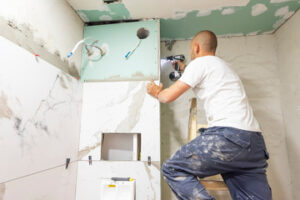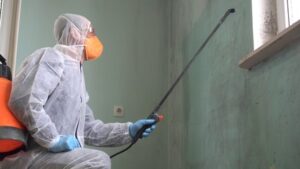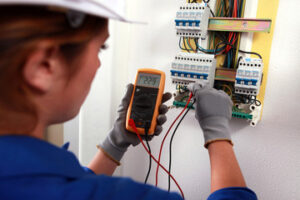Plumbers Castle Rock are responsible for installing, maintaining, and repairing plumbing systems. They work in residential, commercial, and industrial settings.

They are best known for fixing burst pipes and severe clogs, but they also work on new construction projects, consulting blueprints, and installing or maintaining pipe systems. They also ensure that homes and businesses have clean water sources, which is essential for hygiene and survival.
Plumbing systems are comprised of a network of pipes, unions, valves, and fixtures that deliver hot and cold water to households, businesses, and industrial facilities. Plumbers assemble, install, and repair these systems according to specifications and plumbing codes. This career is considered a skilled trade and requires specialized training and certification. Plumbers must be able to read blueprints and understand the principles of engineering and mathematics in order to properly diagnose and repair problems with piping, fixtures, and equipment.
In addition to repairing and installing plumbing, plumbers are also responsible for maintaining systems by following a schedule of inspection and preventive maintenance. This includes testing water pressure, detecting leaks, and cleaning drain lines. They must also inspect and test gas lines to ensure that they are safe. Plumbers may also be required to enter confined spaces in order to make repairs or perform other tasks. This can lead to exposure to hazardous materials and conditions, including noxious fumes and extreme temperatures.
Plumbers are often required to work on weekends and evenings due to emergency call-outs. This can interfere with family and personal commitments. In order to balance work and home life, plumbers must be willing to adapt their schedules as needed. Plumbers should also be willing to continue their education and keep up with changes in technology and industry standards.
Plumbers are required to wear a variety of safety gear, including eye protection and gloves. They are exposed to hazardous chemicals, soldering, and abrasive materials. They must also be able to climb ladders and stairs, and stand for long periods of time. Lastly, plumbers must be able to operate machinery and use tools efficiently. This requires manual dexterity and good eyesight, as well as a strong ability to concentrate. If you have these skills and want to become a plumber, consider attending an apprenticeship program or entering a vocational school that offers a plumbing degree. These programs offer on-the-job training and classroom instruction, giving you the experience and skills you need to be successful in this career. In addition to hands-on training, these programs often include classroom instruction on the latest plumbing technologies and eco-friendly practices.
Education and Training Requirements
The qualifications that you need to become a plumber include some basic education, specialized training, and licensing. You will also need to learn about the regulations and safety procedures that are in place in your local area. Many plumbing schools and apprenticeship programs offer a combination of on-the-job training and classroom instruction. Others provide a hands-on experience at a community college or vocational school.
The basic requirements for getting started are a high school diploma or GED certificate and a training program that prepares you for the practical aspects of this trade. You will need a foundation in math (algebra and geometry) and science (e.g., physics). Courses in drafting and blueprint reading may also be useful. Some vocational schools offer certificate or associate degree programs in plumbing technology.
Most people get their first on-the-job experience as an apprentice, helping a journeyman and soaking up knowledge while working on real projects. This is a great way to see whether a career as a plumber is right for you, and it’s necessary before you can apply for a license.
While the exact rules vary by state, most have three levels that you need to progress through: apprentice, journeyman, and master. As you gain more experience, you can move up the ladder and start your own business. Some people even choose to specialize in a particular aspect of plumbing, which can open up more job opportunities and higher pay rates.
Licensed plumbers must pass an exam to demonstrate their knowledge of plumbing techniques and regulations. You will need to apply for a license in every state where you intend to work, although some have reciprocal agreements that let you use a license issued by another state if the requirements are similar. The application process typically involves submitting an application, fees, and proof of professional experience.
As a plumber, you must be punctual because customers often rely on your availability for emergencies and routine maintenance. Punctuality is important for building trust with your clients and showing that you take your work seriously. In addition, you will need to carry the appropriate tools and wear appropriate clothing for working in cold temperatures.
Work Environment
Plumbing is a highly valued career that can be extremely rewarding. However, it can also be demanding and challenging. It requires extensive knowledge and skill, as well as a high level of physical endurance. Plumbers must be able to work in tight spaces and in awkward positions for extended periods of time, and they must be able to lift heavy objects. They may also be required to travel to different sites and work in various climatic conditions.
Plumbers often work in residential settings, repairing and installing fixtures such as sinks, toilets, bathtubs, and showers. They may also be called on to install or repair gas lines and drainage systems. Residential plumbers are frequently needed to respond to emergency calls for clogged drains and water heaters. They must be able to diagnose problems quickly and find effective solutions.
Many plumbers are self-employed contractors, which can offer greater flexibility and control over their schedules. This can be a desirable option for those who want to avoid the commute and potential for workplace conflicts that come with full-time employment. Self-employed plumbers must maintain their own tools and equipment, although they may be able to borrow or rent specialized tools from other plumbing professionals.
In addition to repairing and installing plumbing fixtures, plumbers are also responsible for maintaining and repairing a wide range of other mechanical systems in homes and businesses. They may be called upon to repair or install sewage and waste disposal systems, garbage disposers, water heaters, heating and cooling systems, and more. They are also responsible for ensuring that all plumbing systems comply with local codes and regulations.
Plumbers may also be required to attend training sessions to keep up with new technologies and equipment in their field. They must be able to follow all relevant safety procedures to prevent injury and exposure to hazardous materials. They are also often required to be on-call for emergencies, which can require them to work outside of normal business hours and on weekends. Despite the challenges, working as a plumber can be an extremely satisfying career for those who have the right skills and qualifications.
Salary
Plumbers play a critical role in keeping homes, businesses, and communities functioning properly. They ensure that people have access to clean water and reliable waste systems, while also contributing to environmental sustainability by installing energy-efficient plumbing fixtures and equipment. As a result, the job offers plenty of opportunities for career advancement and high earning potential. If you’re looking for a hands-on, rewarding career, plumbing may be the right choice for you.
The salary of a plumber varies depending on geographic location, years of experience, and license type. However, the average plumber makes over $59,000 per year, according to PayScale. Additionally, many plumbers eventually become self-employed and set their own rates. In this way, they enjoy the freedom and challenge of running their own business while still generating a substantial income.
In addition to a competitive salary, there are many other benefits of pursuing a career as a plumber. First, it’s relatively easy to get started in this profession because there are numerous trade schools and apprenticeship programs that offer accelerated training routes. In addition, apprentices are paid while they learn the trade, which allows them to begin supporting themselves early on in their careers.
Another benefit of a career as a plumber is that it provides excellent job security. The demand for plumbers is consistently strong, and this is particularly true for those who are highly skilled and experienced. For example, if you have years of experience as a journeyman plumber and possess a master plumber license, you can expect to make an even higher salary.
Finally, as a plumber, you’ll have the opportunity to work in a variety of different settings and on a wide range of projects. This can include everything from repairing toilets in homes to designing and installing entire plumbing systems for new construction projects. Moreover, the variety of work can help keep things interesting and prevent you from becoming bored with your career.
Finally, a career as a plumber can provide a sense of fulfillment because it allows you to make an immediate difference in people’s lives. You can help them avoid costly repairs by identifying and fixing issues before they worsen, or you can give families the peace of mind that their home’s plumbing is safe and sound.


